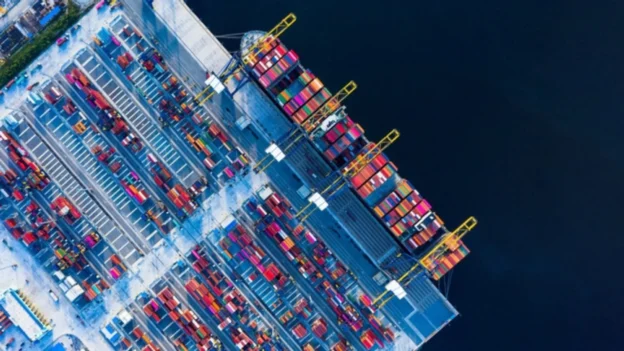Singapore, recognized as the world’s largest bunkering hub, has succeeded in its first simultaneous (SIMOPS) methanol bunkering operation, achieving both bunkering and loading of the fuel. This pioneering operation was carried out at the new Tuas Port last Monday, through a collaboration between X-Press Feeders, Global Energy Trading Pte Ltd (GET) and PSA Singapore (PSA).
Both the mass flow measurement (MFM) system for methanol and the use of digital bunkering were tested during the process. These developments follow previous milestones in the supply of methanol in Singapore, such as the first ship-to-container methanol supply for the Laura Maersk in July 2023 and the ship-to-ship supply of about 1,340 metric tons of methanol for the Stena Prosperous in May 2024.
Operations supervised and security measures implemented
On this occasion, GET supplied an X-Press Feeders container ship with approximately 300 metric tons of biomethanol while the vessel was carrying out container loading operations. The fuel was supplied using the MT KARA, an IMO Type II chemical fuel tanker. The ISCC certified biomethanol was produced by OCI Global and supplied through GET and the fuel was stored at the Vopak Penjuru terminal in Singapore.
It is important to note that several safety measures were implemented, including a Hazard Identification (HAZID) workshop and a Hazard and Operability and Operability (HAZOP) study organized by the Maritime and Port Authority of Singapore (MPA). In addition, the Emergency Operations Center of the MPA’s Port Operations Control Center monitored the operations, supported by a drone equipped to detect methanol leaks and flames in case of incidents.
The port of Tuas and methanol supply
Opened in 2022, the Port of Tuas is set to become the world’s largest container port by the 2040s, with an annual capacity of 65 million TEUs, tripling the current capacity of the ports of Los Angeles and Long Beach.
It is now ready for commercial operations at shore-to-ship, ship-to-ship and SIMOPS scale for methanol, and similar methodologies are being used for other emerging marine fuels such as ammonia, ammonia and methanol. ammonia and hydrogen .
Follow us on social networks and don’t miss any of our publications!
YouTube LinkedIn Facebook Instagram X
Source: gcaptain.com
Photo: shutterstock

